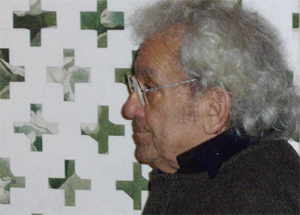Henri Cueco facts for kids
Quick facts for kids
Henri Cueco
|
|
|---|---|
 |
|
| Born | 19 October 1929 Uzerche, Corrèze, France
|
| Died | 13 March 2017 (aged 87) Paris, France
|
| Occupation | Painter, essayist, novelist, radio personality |
| Political party | French Communist Party (1956–1976) |
| Spouse(s) | Marinette Cueco |
Henri Cueco (born October 19, 1929 – died March 13, 2017) was a French artist who did many things. He was a painter, a writer of essays and novels, and even a radio personality. He taught himself how to paint, and his art was shown all over the world. He wrote many books, including stories and collections of his thoughts. He also shared his ideas on a French radio station called France Culture.
Henri Cueco was interested in politics. He started as a communist but later became a libertarian. He also helped start an art group called Coopérative des Malassis. This group made art that spoke out against too much buying and owning things. He was famous for two main things: a series of paintings called The Red Men. These paintings showed ideas about the Cold War, like the events in France in May 1968, the Vietnam War, and the Red Scare (a time when people were very afraid of communism). He was also known for his 150 still life paintings, which were like "portraits" of potatoes!
| Top - 0-9 A B C D E F G H I J K L M N O P Q R S T U V W X Y Z |
Early Life and Learning
Henri Cueco was born on October 19, 1929, in Uzerche, a countryside area in Corrèze, France. His father, Vicente Cueco, was an immigrant from Spain. His mother was French. Henri mostly taught himself how to paint. However, his father also taught him painting skills starting when Henri was 13 years old.
His Artistic Journey
Cueco began his art career in the 1950s by painting landscapes. In the 1960s, he started painting in a style called "Nouvelle figuration." This style focused on showing real objects and people. His art often had political messages. He was not a fan of materialism (caring too much about possessions) or minimalism (art with very few elements). He painted hunting dogs and snakes. Later, he created 150 still life paintings of potatoes, which he called "portraits."
The Malassis Collective
From 1969 to 1970, Cueco helped create an art group called Coopérative des Malassis. He started it with Lucien Fleury, Jean-Claude Latil, Michel Parré, and Gérard Tisserand. This group made art that was often funny and political.
- In 1972, they designed a large, funny political painting called Le Grand Méchoui.
- In 1973, they created Qui tue ? ou l’affaire Gabrielle Russier.
- From 1973 to 1975, they designed a display about consumerism called Radeau de la Méduse ou la Dérive de la société. It was shown in the Grand'Place in Grenoble.
- In 1977, they designed Les affaires reprennent.
Exhibiting His Work
Cueco's art was first shown at the Salon de la Jeune peinture. Then it was displayed at the Atelier populaire. In 1970, his famous series The Red Men was shown at the Musée d'Art Moderne de la Ville de Paris. These paintings explored themes of the Cold War, including the May 1968 events, the Vietnam War, and the Red Scare.
In 1986, Cueco showed a painting in Beijing, China. It featured Karl Marx, Sigmund Freud, and Mao Zedong. The painting included a quote: "Capitalism is the exploitation of men by men. Communism? It is the opposite." He was asked to take this painting down.
In 1997, Cueco's paintings, inspired by artists like Nicolas Poussin and Philippe de Champaigne, were shown at the Centre d'art contemporain in Meymac. In 2014, he was the special guest at the Expoésie Festival. His art was shown at the Musée d'art et d'archéologie du Périgord. His very last exhibition was in February 2017 at La Maison Rouge.
Other Contributions
Cueco founded the Association Pays Paysage in Uzerche. He was a regular contributor to the French radio station France Culture. He appeared on shows like Les Papous dans la tête and Les Décraqués. He wrote several books, including novels and collections of essays. One of his novels was even turned into a movie in 2007 called Conversations with My Gardener.
Political Views
Henri Cueco was very interested in Marxism, which is a way of thinking about society and economics. He was a member of the French Communist Party from 1956 to 1976. He also joined the General Confederation of Labour (CGT), which is a major workers' union in France. In 1977, he helped start the Syndicat national des artistes plasticiens CGT with Ernest Pignon-Ernest. However, by the 1980s, his views changed, and he became a libertarian. Libertarians believe in more personal freedom and less government control.
Family and Later Life
Henri Cueco was married to Marinette Cueco. They had a son named Pablo Cueco, who is a professional zarb player (a zarb is a type of drum). Henri lived between Vigeois in his home region of Corrèze and Paris.
Henri Cueco passed away on March 13, 2017, in Paris. He was 87 years old. He died from a kidney infection, but he had also been weakened by Alzheimer's disease.
Images for kids


